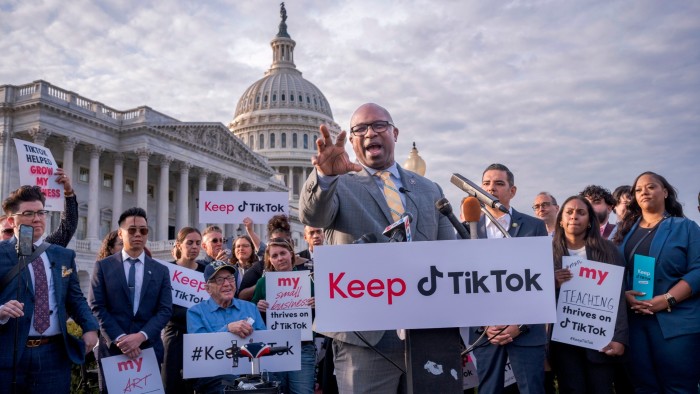Stay informed with free updates
Simply sign up to the Technology sector myFT Digest — delivered directly to your inbox.
The writer is the author of ‘Chip War’
At the start of this year, President Donald Trump declared that “enhancing America’s global AI dominance” was a central goal of his presidency. His dealmaking around TikTok’s future in the US market will be an early test of what “AI dominance” means in practice. That is because ByteDance — TikTok’s parent company — is China’s leading AI business.
ByteDance’s clever use of AI recommendation algorithms powers TikTok’s delivery of addictive short videos and effective ads. But its expertise extends beyond this. It has also produced impressive work in other AI subfields, including high-quality large language models and models for robotics.
ByteDance is as central to China’s AI ecosystem as OpenAI or Meta are to America’s. In AI circles, ByteDance has the cachet — and the cash — to lure senior executives away from Google. Its alumni have founded a slew of start-ups, from cross-border ecommerce to AI for biomedical research.
Though start-up DeepSeek has attracted more attention this year, ByteDance is China’s most successful AI business. The private company’s revenue was close to Meta’s in 2023 and it raked in $40bn in earnings before interest, tax, depreciation and amortisation (its preferred metric for profitability), up from $25bn the previous year. While most of the company’s revenue comes from its China-based units, $16bn came from TikTok’s sales to US users.
ByteDance’s profitability has enabled the company to pour money into acquiring AI chips. Last year, it purchased roughly as many Nvidia AI chips as Meta, though these were the lower-quality H20 variant, due to US export restrictions. This year, it plans to spend $5.5bn buying AI chips from Huawei and other Chinese companies, helping to fund the development of China’s homegrown AI chip industry. And it is not only acquiring chips — it is also reportedly exploring other tech infrastructure, like subsea cables.
As Beijing pushes for its companies’ AI models to be adopted abroad, ByteDance’s global footprint is a unique asset.
Trump, who previously supported a ban on TikTok before reversing course after crediting the app for helping him reach young voters, now confronts a decision that will shape the AI race. He has set a deadline of April 5 to find a non-Chinese buyer for TikTok, otherwise the app will be banned on national security grounds.
Cutting off TikTok’s access to the US would not sink ByteDance, of course, given the profitability of its China-based business. But the US market is lucrative, which is why ByteDance has fought hard to stay in it.
The White House has rebalanced US discussion away from the risks of AI and embraced rapid progress instead. It has prioritised data centre construction and streamlined regulation around providing the power that AI data centres require. The commerce department has tightened rules governing chip technology transfer to China. And Trump’s “America First Investment Policy” calls for tougher limits on investors putting money into Chinese AI.
These moves fit with a strategy that aims to stay as far ahead of China on AI as possible. They have also given Washington’s China hawks new ammunition against TikTok. Congress first voted to force a full divestment of TikTok over concerns that US user data could be accessed by China. TikTok has also been criticised for its surveilling of the location of journalists and for encouraging users to message members of Congress about legislation ByteDance opposed.
The AI race provides an additional rationale for staying tough on TikTok. ByteDance plays a central role in funding China’s AI ecosystem, acquiring AI computing capabilities and building China’s global AI presence. The Trump administration has talked tough on restricting US money into adversaries’ tech but TikTok puts money into China’s AI ecosystem every day.




